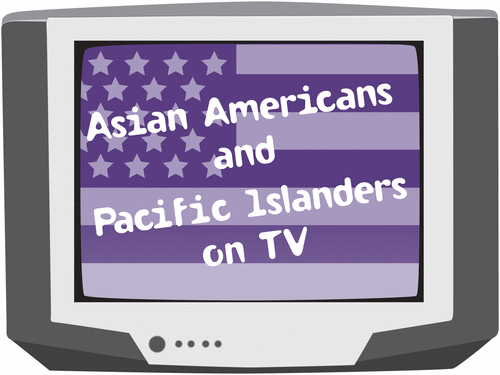Beyond Representation: Authentic Storytelling For Asian And Asian Americans In Media

Table of Contents
The Limitations of Tokenism and Stereotypes
For too long, Asian and Asian American characters in media have been confined to harmful stereotypes. The "model minority" myth, which paints all Asians as academically successful and docile, ignores the struggles and complexities of real people. Equally damaging is the hypersexualization of Asian women, reducing them to objects of desire and perpetuating harmful tropes. The "perpetual foreigner" stereotype, where Asian characters are portrayed as perpetually outside of mainstream American culture, further reinforces feelings of otherness and exclusion.
- Examples of harmful stereotypes: The submissive Asian woman in countless Hollywood films, the nerdy, asexual Asian male sidekick, and the villainous, inscrutable Asian mastermind are all examples of deeply ingrained and damaging stereotypes. These tropes are often used in advertising as well, reinforcing these negative associations.
- Impact on self-perception: Constant exposure to these limited and often offensive portrayals negatively impacts the self-esteem and self-perception of Asian and Asian American individuals, leading to feelings of inadequacy and invisibility.
- Reinforcement of societal biases: These media representations contribute to broader societal biases and prejudices, shaping how non-Asian audiences perceive and interact with Asian and Asian American communities.
Centering Authentic Voices and Experiences
Genuine progress requires centering the authentic voices and lived experiences of Asian and Asian American creators. This means actively seeking out and amplifying stories that are not only written and directed by members of the community but also reflect the full spectrum of experiences within the community itself. This diversity must extend beyond ethnicity to include varied socioeconomic backgrounds, sexual orientations, and gender identities.
- Successful examples: Shows like "Fresh Off the Boat" and "Everything Everywhere All at Once" demonstrate the power of authentic storytelling, presenting complex characters and family dynamics that resonate with audiences.
- Representation behind the camera: Having Asian and Asian American writers, directors, producers, and other creative professionals behind the scenes is crucial in ensuring the authenticity and integrity of the narratives being portrayed. Their lived experiences inform the stories in ways that outside perspectives cannot.
- Complex characters: Moving beyond stereotypes requires the creation of complex, multi-dimensional characters that defy easy categorization. These characters should showcase a range of emotions, flaws, and aspirations, reflecting the true diversity of human experience within the Asian and Asian American community.
Beyond the Single Story: Exploring Diversity within Asian Communities
The term "Asian" encompasses a vast and incredibly diverse range of cultures, languages, and experiences. To reduce this diverse tapestry to a single, monolithic entity is to perpetuate another form of harmful simplification. It's crucial to acknowledge and celebrate the unique stories of various Asian communities, including South Asian, East Asian, Southeast Asian, and Pacific Islander communities.
- Underrepresented groups: Many Asian communities are significantly underrepresented in media, their stories largely unheard and unseen. This lack of representation contributes to a lack of understanding and empathy among wider audiences.
- Showcasing regional variations: Media needs to showcase the distinct regional and cultural variations within Asian communities. For instance, the experiences of a Cambodian American are vastly different from those of a Korean American, and both differ from a Japanese American's experience.
- Avoiding generalizations: Nuanced storytelling is essential to avoid generalizations and stereotypes. Each story should be unique, reflecting the individual and collective experiences of the characters within their specific cultural contexts.
The Power of Authentic Storytelling in Fostering Understanding and Empathy
Authentic storytelling possesses the power to challenge prejudices, promote cross-cultural understanding, and foster empathy. By presenting realistic and relatable characters, media can help dismantle harmful stereotypes and create a more inclusive and equitable society.
- Examples of impactful media: Documentaries and films that center the stories of marginalized communities can be powerful tools for raising awareness and promoting understanding.
- Shaping public perceptions: Media plays a crucial role in shaping public perceptions and attitudes. By showcasing the richness and diversity of Asian and Asian American experiences, media can combat racism and xenophobia.
- Long-term impact: Authentic storytelling has the potential for long-term positive impact, fostering a more empathetic and tolerant society where individuals from all backgrounds feel seen, heard, and understood.
Conclusion
In conclusion, moving beyond mere representation to achieve true authentic storytelling for Asian and Asian Americans in media is not simply a matter of inclusivity; it's a moral imperative. Tokenism and harmful stereotypes are detrimental to individuals and society as a whole. By centering authentic voices, showcasing the diverse experiences within Asian communities, and creating complex, multi-dimensional characters, we can create a more accurate, equitable, and empathetic media landscape. Support independent filmmakers, actively seek out and review authentic projects, and demand better representation from major studios. Let's work together to champion authentic storytelling for Asian and Asian Americans in media, ensuring that future generations see themselves reflected in a way that is both accurate and celebratory.

Featured Posts
-
 Superman Daredevil Bullseye And 1923 Todays Comic Book News
May 12, 2025
Superman Daredevil Bullseye And 1923 Todays Comic Book News
May 12, 2025 -
 Unlocking Maximum Profits With A Simple Dividend Strategy
May 12, 2025
Unlocking Maximum Profits With A Simple Dividend Strategy
May 12, 2025 -
 Adam Sandlers Hidden Easter Eggs A Complete Guide
May 12, 2025
Adam Sandlers Hidden Easter Eggs A Complete Guide
May 12, 2025 -
 Philippe Candeloro Et Chantal Ladesou Ambassadeurs De La Vente Des Vins De Nuits Saint Georges
May 12, 2025
Philippe Candeloro Et Chantal Ladesou Ambassadeurs De La Vente Des Vins De Nuits Saint Georges
May 12, 2025 -
 Netflix Jay Kelly I Tainia Poy Tha Sas Kanei Na Gelasete
May 12, 2025
Netflix Jay Kelly I Tainia Poy Tha Sas Kanei Na Gelasete
May 12, 2025
Latest Posts
-
 Payton Pritchards Journey From Childhood Dreams To Nba Success
May 12, 2025
Payton Pritchards Journey From Childhood Dreams To Nba Success
May 12, 2025 -
 The Making Of A Sixth Man Payton Pritchards Journey To Success
May 12, 2025
The Making Of A Sixth Man Payton Pritchards Journey To Success
May 12, 2025 -
 Payton Pritchards Rise Factors Behind His Successful Season
May 12, 2025
Payton Pritchards Rise Factors Behind His Successful Season
May 12, 2025 -
 Magic Blowout Propels Celtics To Division Title
May 12, 2025
Magic Blowout Propels Celtics To Division Title
May 12, 2025 -
 Payton Pritchards Breakout Season A Detailed Look
May 12, 2025
Payton Pritchards Breakout Season A Detailed Look
May 12, 2025
